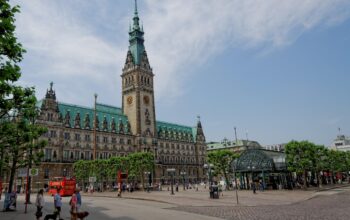In the ever-shifting landscape of global politics, leadership styles and decisions are under the microscope like never before. The past week’s news cycle has offered a vivid snapshot of the way leaders are grappling with crises, navigating alliances, and making moves that ripple far beyond their own borders. Here’s a modular, feature-style rundown of five trending stories about political leadership that are making waves—right now.
1. Trump Declines Israeli Plan To Take on Iran: Restraint or Strategy?
Imagine the world on a knife’s edge—missile attacks between Israel and Iran, tensions rising with each exchange. Into this powder-keg stepped President Donald Trump, who was presented with a proposal by Israel: to take out Iran’s Supreme Leader. Trump said no. This veto is being characterized by some as a rare moment of restraint in international politics, a pause before escalation. Supporters, including GOP Senator Rand Paul, praised Trump for not dragging the U.S. into another conflict. Others, like Senator Lindsey Graham, warned that if diplomacy fails, the gloves should come off. The real question is whether Trump’s instinct for deal-making will keep the region from tipping into all-out war—or if his unpredictability leaves everyone guessing.
2. G7 Summit: Allies Pull Back the Curtain on Trump’s Vision
As the G7 summit kicked off in scenic Kananaskis, a subtle tug-of-war took center stage. World leaders are increasingly wary of Trump’s confrontational style and his ‘America First’ policies, particularly regarding trade and defense. French President Emmanuel Macron led quiet resistance, while Italy’s Giorgia Meloni tried to straddle the divide as a bridge between Trump and the rest of Europe. Mark Sobel, a veteran observer of international finance, summed it up: behind the handshakes and photo-ops, the G7 appears more fragmented and less sure-footed than ever, reflecting a world where national interests increasingly trump shared global leadership.
3. U.S. Lawmakers Under Fire: The Domestic Face of Leadership Crisis
Back home, America’s political leaders are facing threats and violence. Over the weekend, two Minnesota lawmakers were shot in their homes, and a state representative was assassinated. The attacks sent shockwaves through state and federal governments, and Democratic leaders like Jeffries and Schumer called for more protection for lawmakers. Governors and lawmakers across the country condemned the violence, highlighting the dangerous consequences of divisive rhetoric and the need for political courage and resilience.
4. Teachers’ Union President Exits DNC: A Leadership Shakeup
In another sign of shifting political winds, the president of a major teachers’ union resigned from the Democratic National Committee. While details remain sparse, the move comes amid broader debates about education, union influence, and the future of progressive leadership within the Democratic Party. Observers suggest this could signal a realignment—or simply reflect the unpredictable nature of political alliances.
5. The Schedule F Executive Order: A Power Move for Presidents?
Behind the scenes of Trump’s presidency, a little-known rule called Schedule F is drawing big attention. If reinstated, it would allow the president to fire tens of thousands of career government employees and replace them with political loyalists. Critics warn this could turn the federal government into a partisan playground, undermining its ability to serve the public fairly. Supporters frame it as a way to ‘clean house’ of entrenched bureaucracies. Either way, the implications for American democracy are anything but trivial—this rule change could reshape the character of government for decades.
Leadership in Practice: What’s Trending Behind the Headlines?
Leadership in 2025 isn’t just about being at the top—it’s about managing crises, calming nerves, and sometimes saying no to the most aggressive plans. Trump’s decision to block a strike on Iran’s top leader shows a president balancing restraint with strength, while the G7’s drama underscores how personal chemistry and policy disagreements shape world politics. Meanwhile, the threats to U.S. lawmakers remind us that leadership isn’t just about policy—it’s about personal courage and standing up for democratic values. The leadership shakeup in the teachers’ union hints at ongoing power struggles within coalitions, and the Schedule F debate reveals how administrative rules can have far-reaching impacts.
As we watch these stories unfold, one thing is clear: leadership in politics is as much about character, restraint, and integrity as it is about power, strategy, and vision. Each of these moments offers a lesson—sometimes cautionary, sometimes inspiring—about what it takes to lead in turbulent times.
References:
- https://fortune.com/2025/06/15/trump-veto-israel-regime-change-iran-supreme-leader-ayatollah-ali-khamenei/
- https://www.politico.com/politics
- https://www.wispolitics.com/2025/dem-activists-to-vote-on-resolution-calling-for-trump-impeachment/
- https://www.latimes.com/world-nation/story/2025-06-14/as-trump-goes-to-g7-summit-other-world-leaders-aim-to-show-theyre-not-intimidated
- https://kettering.org/the-schedule-f-threat-to-democracy-a-project-2025-explainer/
- https://www.hartfordfunds.com/insights/investor-insight/mit/human-centric-investing-podcast.html
- https://corpgov.law.harvard.edu/2025/06/15/top-five-takeaways-from-the-2025-proxy-season/
- https://www.inaturalist.org/posts/113184-inaturalist-receives-grant-to-improve-species-suggestions



